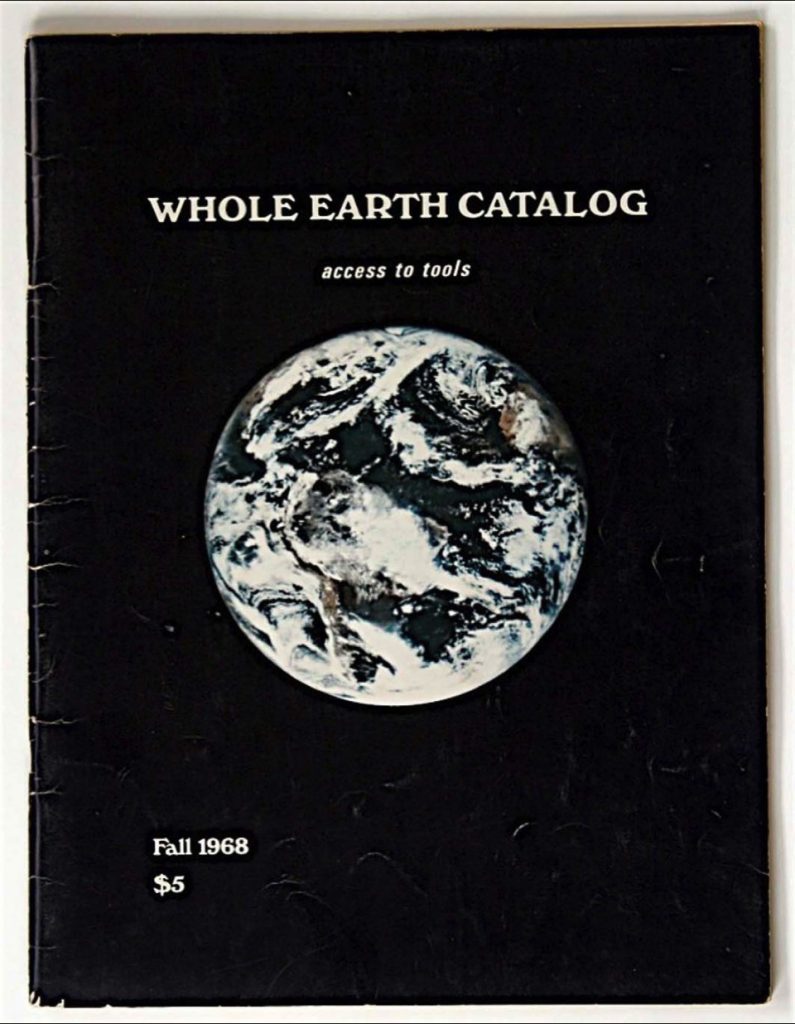 Hippies, and most young people of the late ’60s and ’70s, didn’t just sit around playing Jimi Hendrix and Grateful Dead records and smoking a lot of weed (although they did plenty of that too). Many were also voracious readers, of all kinds of material but particularly of books that supported or fed into their exploratory sense and the zeal to break away from the norm.
Hippies, and most young people of the late ’60s and ’70s, didn’t just sit around playing Jimi Hendrix and Grateful Dead records and smoking a lot of weed (although they did plenty of that too). Many were also voracious readers, of all kinds of material but particularly of books that supported or fed into their exploratory sense and the zeal to break away from the norm.
In order to be a bona fide hippie, it was imperative to familiarize oneself with certain books, covering a wide array of topics ranging from spirituality to politics to consciousness-raising to the plight of the disenfranchised.
In this first of two parts, we’ve chosen a baker’s dozen books that were essential to any respectable hippie bookshelf (or at least those wooden fruit crates stacked up next to the waterbed). Some remain powerful today, others are admittedly dated. Most are still available. They all had their moment of importance during a time when burying one’s head in a good book was still an everyday pastime for those seeking to become enlightened, to learn and grow in ways that were not being taught in school.
Read part two here.
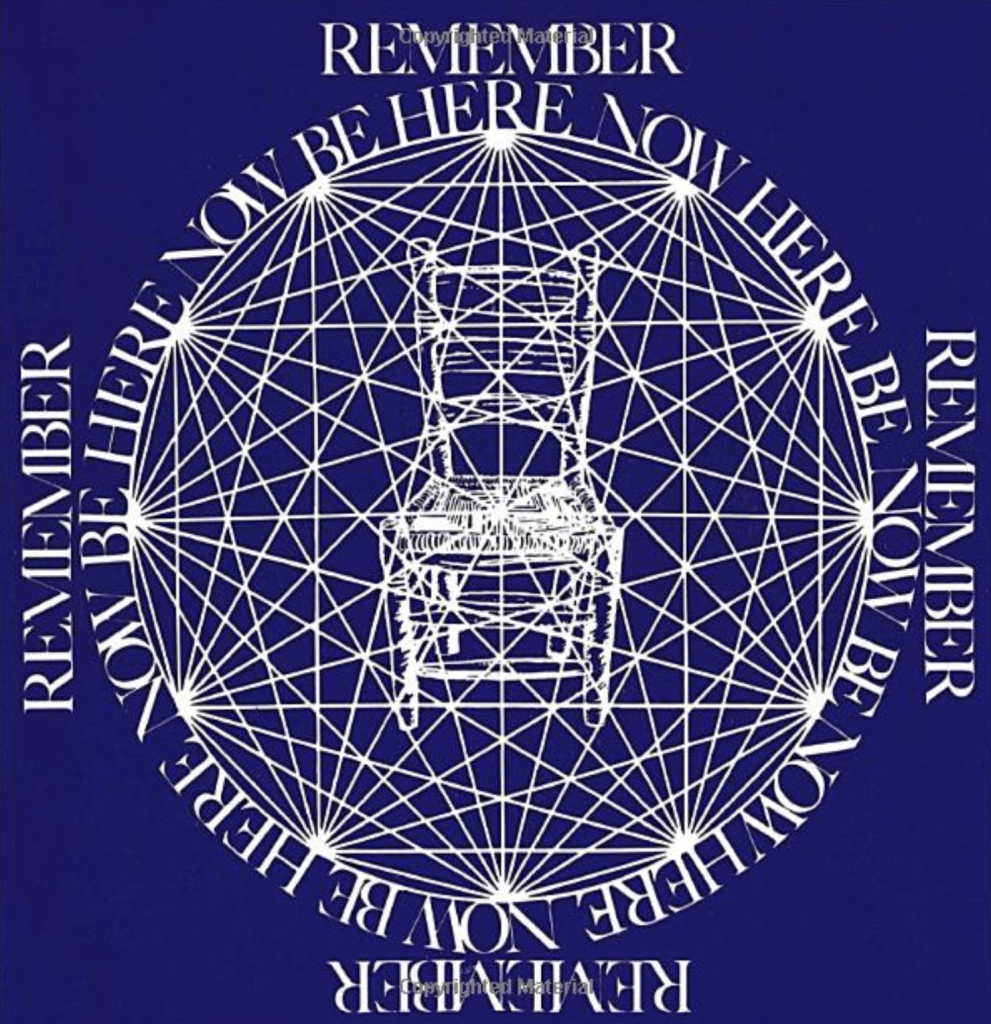 Be Here Now—Ram Dass was born Richard Alpert and was a Harvard professor when he met Timothy Leary and became involved in the latter’s work with hallucinogenic drugs. A visit to India in 1967 led Alpert to an American spiritualist named Bhagavan Das and subsequently to Neem Karoli Baba, who became Alpert’s guru. After the name change to Ram Dass, the former Alpert left academia and the conventional life behind and wrote Be Here Now, a wildly popular account of his own journey filled with suggestions on living a spiritual, meditative life, practicing yoga and seeking a higher plane of existence.
Be Here Now—Ram Dass was born Richard Alpert and was a Harvard professor when he met Timothy Leary and became involved in the latter’s work with hallucinogenic drugs. A visit to India in 1967 led Alpert to an American spiritualist named Bhagavan Das and subsequently to Neem Karoli Baba, who became Alpert’s guru. After the name change to Ram Dass, the former Alpert left academia and the conventional life behind and wrote Be Here Now, a wildly popular account of his own journey filled with suggestions on living a spiritual, meditative life, practicing yoga and seeking a higher plane of existence.
Watch a video of “Be Here Now,” a song written and recorded by George Harrison, inspired by the Ram Dass book
The Whole Earth Catalog—Created by Stewart Brand, The Whole Earth Catalog (with its cover photo of one half of the whole Earth) was established with the intention of providing hippies and other renegades from drab society with the “access to tools and ideas” one would need to lead a productive alternative lifestyle. Whether you wanted to learn wood carving or put a water tank in your mountain cabin, ponder what the future might hold, buy a buckskin jacket or hunt wild mushrooms, this was where you could find the tools (i.e., products) to do so. Later issues embraced the emerging computer technology as well. It was published regularly from 1968 to 1972 and then randomly thereafter.
Watch Stewart Brand on the concept behind the Whole Earth
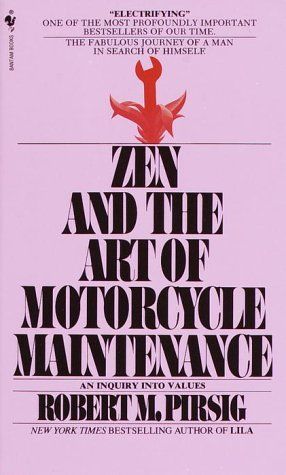 Zen and the Art of Motorcycle Maintenance—You didn’t need to own (or even know how to ride) a motorcycle to appreciate Robert M. Pirsig’s “fictionalized autobiography” that recounted a 17-day bike journey from Minnesota to California. The book was quite philosophical in its approach and spoke of values and “quality”—it questioned, basically, how we choose to live, what truth is and the “art of rationality,” all under the umbrella of the road trip the author took with his son.
Zen and the Art of Motorcycle Maintenance—You didn’t need to own (or even know how to ride) a motorcycle to appreciate Robert M. Pirsig’s “fictionalized autobiography” that recounted a 17-day bike journey from Minnesota to California. The book was quite philosophical in its approach and spoke of values and “quality”—it questioned, basically, how we choose to live, what truth is and the “art of rationality,” all under the umbrella of the road trip the author took with his son.
Listen to an audio interview from 1974 with author Robert M. Pirsig
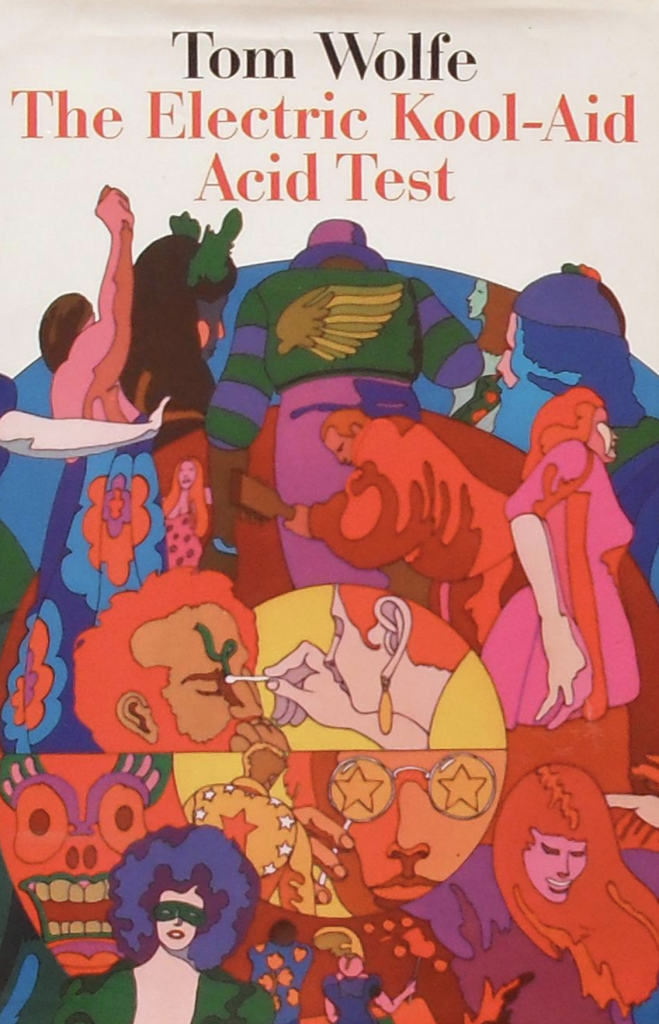 The Electric Kool-Aid Acid Test—Talk about being in the right place at the right time. Author Tom Wolfe chronicled the experiences of novelist Ken Kesey and his band of Merry Pranksters as they gobbled handfuls of LSD—before most people had a clue what it was—and drove their eye-poppingly painted school bus Furthur across the U.S. Wolfe described the Acid Tests (basically freewheeling LSD parties with multimedia elements adding to the fun) held by Kesey and his cohorts and the fallout as the authorities started to catch on. Some of the book’s subjects complained that, as an outsider to the movement, Wolfe didn’t really understand a lot of what he was taking in, but nonetheless the book became required reading for anyone who wanted to get a sense of what it was like to be in the midst of it all as the well-kept secret of the acid experience made its way out into the world.
The Electric Kool-Aid Acid Test—Talk about being in the right place at the right time. Author Tom Wolfe chronicled the experiences of novelist Ken Kesey and his band of Merry Pranksters as they gobbled handfuls of LSD—before most people had a clue what it was—and drove their eye-poppingly painted school bus Furthur across the U.S. Wolfe described the Acid Tests (basically freewheeling LSD parties with multimedia elements adding to the fun) held by Kesey and his cohorts and the fallout as the authorities started to catch on. Some of the book’s subjects complained that, as an outsider to the movement, Wolfe didn’t really understand a lot of what he was taking in, but nonetheless the book became required reading for anyone who wanted to get a sense of what it was like to be in the midst of it all as the well-kept secret of the acid experience made its way out into the world.
Watch actual footage of the 1966 Acid Test “Graduation Ceremony,” with music by Quicksilver Messenger Service
Related: Our obituary of Kool-Aid author Tom Wolfe
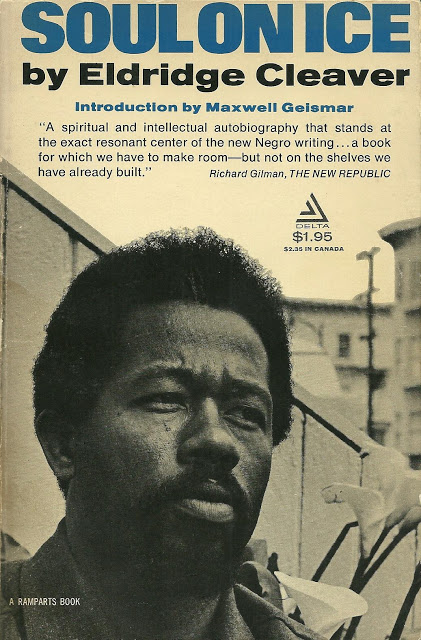 Soul on Ice—Eldridge Cleaver was a resident of Folsom State Prison in 1965 when he began writing what became his memoir. Published three years later, it was widely viewed as one of the most honest contemporary depictions of the African-American experience in America, with all of its attendant racism and oppression. Cleaver wrote in raw terms of black liberation, the role of gender in black life, as well as topics such as war, celebrity, crime and much more.
Soul on Ice—Eldridge Cleaver was a resident of Folsom State Prison in 1965 when he began writing what became his memoir. Published three years later, it was widely viewed as one of the most honest contemporary depictions of the African-American experience in America, with all of its attendant racism and oppression. Cleaver wrote in raw terms of black liberation, the role of gender in black life, as well as topics such as war, celebrity, crime and much more.
Watch: When Eldridge Cleaver was a guest on Firing Line with William F. Buckley (1968)
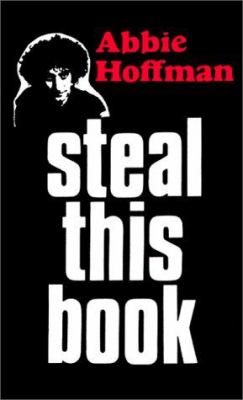 We Are Everywhere and Steal This Book—Jerry Rubin and Abbie Hoffman were political and social activists who made ample use of street theater, deftly cross-breeding the two disciplines to get their message across to a mass audience—and annoying the hell out of the powers-that-be in the process. They found a willing audience in the left-leaning youth of the late ’60s and co-founded (along with fellow activist Paul Krassner) the Youth International Party (YIP), which earned them the tag Yippies. Both Rubin and Hoffman had a knack for making the news with their provocative statements and actions, and both were arrested and tried as members of the Chicago 8 (later 7) following the demonstrations at the 1968 Democratic National Convention in Chicago. Both naturally took their ideas to the publishing world, producing highly popular books.
We Are Everywhere and Steal This Book—Jerry Rubin and Abbie Hoffman were political and social activists who made ample use of street theater, deftly cross-breeding the two disciplines to get their message across to a mass audience—and annoying the hell out of the powers-that-be in the process. They found a willing audience in the left-leaning youth of the late ’60s and co-founded (along with fellow activist Paul Krassner) the Youth International Party (YIP), which earned them the tag Yippies. Both Rubin and Hoffman had a knack for making the news with their provocative statements and actions, and both were arrested and tried as members of the Chicago 8 (later 7) following the demonstrations at the 1968 Democratic National Convention in Chicago. Both naturally took their ideas to the publishing world, producing highly popular books.
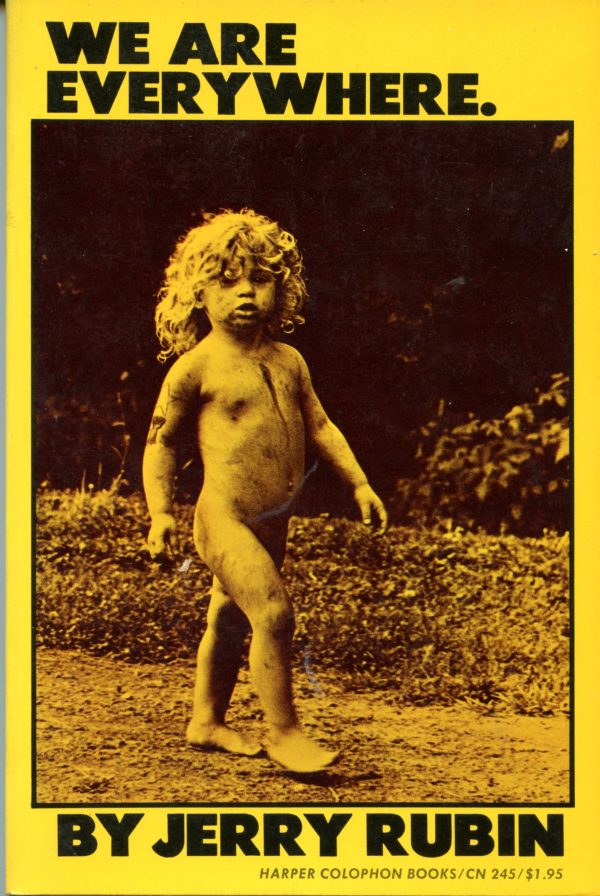 Rubin’s We Are Everywhere was written while he was incarcerated in Chicago and addresses his views on the trial and the youth-led upheaval that he believed was coming. Hoffman, the more colorful and humorous writer of the two, penned several best-selling books: Steal This Book, from 1971, was divided into three sections: “Survive!” “Fight!” and “Liberate!,” and outlined how one might live without paying for things as well as more productive pursuits such as using the media, living on a commune and more.
Rubin’s We Are Everywhere was written while he was incarcerated in Chicago and addresses his views on the trial and the youth-led upheaval that he believed was coming. Hoffman, the more colorful and humorous writer of the two, penned several best-selling books: Steal This Book, from 1971, was divided into three sections: “Survive!” “Fight!” and “Liberate!,” and outlined how one might live without paying for things as well as more productive pursuits such as using the media, living on a commune and more.
Watch a brief documentary on the Yippies
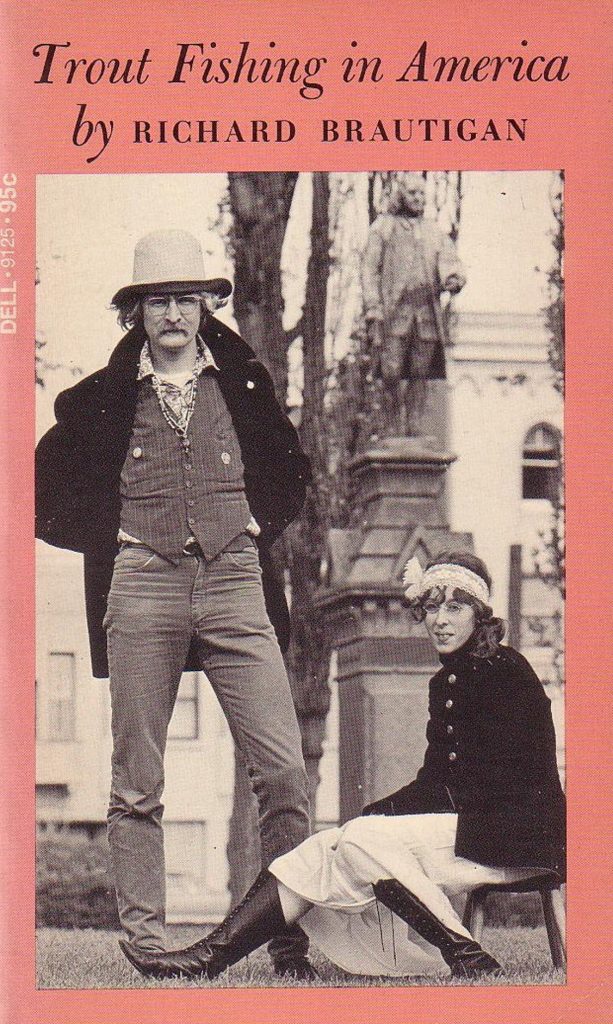 Trout Fishing in America—Richard Brautigan’s novel, published in 1967, was actually written several years earlier. It is often described with words like abstract or incomprehensible or, as in Amazon’s description: “An indescribable romp, the novel is best summed up in one word: mayonnaise.” Let’s just say it was experimental, maybe not really about anything at all. Whatever it was, it caught on big, and made Brautigan a literary favorite among the young, although he was supposedly not a big fan of the hippies he inspired.
Trout Fishing in America—Richard Brautigan’s novel, published in 1967, was actually written several years earlier. It is often described with words like abstract or incomprehensible or, as in Amazon’s description: “An indescribable romp, the novel is best summed up in one word: mayonnaise.” Let’s just say it was experimental, maybe not really about anything at all. Whatever it was, it caught on big, and made Brautigan a literary favorite among the young, although he was supposedly not a big fan of the hippies he inspired.
Listen to Brautigan read from Trout Fishing in America
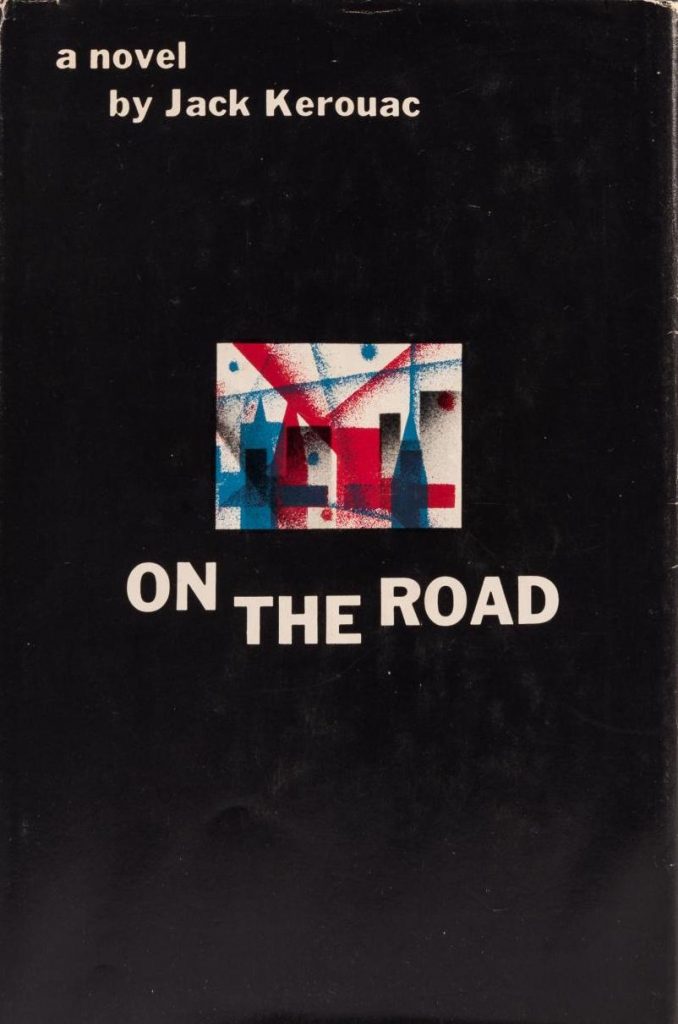 On the Road—Whether they were hitchhiking or piling into Volkswagen vans, many of America’s young took to the road in search of adventure in the ’60s and ’70s. Whether they knew it or not (and many of them did, as they crammed beat-up paperbacks of the book into their back pockets), they were often emulating Jack Kerouac, who, along with his free-spirited friend Neal Cassady, set out in the late ’40s to discover America and have a grand old time along the way. Kerouac famously typed the novel on one long scroll of paper, revising it over the next several years. It was finally published in 1957 and made Kerouac, as well as Cassady—the character Dean Moriarty in the book—folk heroes among America’s youth (as were their Beat writer friends like Allen Ginsberg and William Burroughs). Kerouac published numerous other highly regarded works but was actually rather conservative and was said to disdain the hippies, who often sought him out. He died a bitter alcoholic in 1969. Scroll to the bottom to watch Kerouac read from On the Road, with piano accompaniment by Steve Allen.
On the Road—Whether they were hitchhiking or piling into Volkswagen vans, many of America’s young took to the road in search of adventure in the ’60s and ’70s. Whether they knew it or not (and many of them did, as they crammed beat-up paperbacks of the book into their back pockets), they were often emulating Jack Kerouac, who, along with his free-spirited friend Neal Cassady, set out in the late ’40s to discover America and have a grand old time along the way. Kerouac famously typed the novel on one long scroll of paper, revising it over the next several years. It was finally published in 1957 and made Kerouac, as well as Cassady—the character Dean Moriarty in the book—folk heroes among America’s youth (as were their Beat writer friends like Allen Ginsberg and William Burroughs). Kerouac published numerous other highly regarded works but was actually rather conservative and was said to disdain the hippies, who often sought him out. He died a bitter alcoholic in 1969. Scroll to the bottom to watch Kerouac read from On the Road, with piano accompaniment by Steve Allen.
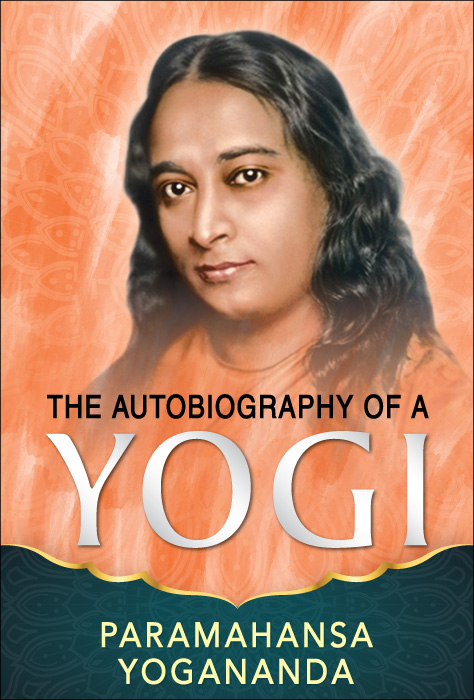 The Autobiography of a Yogi—Paramahansa Yogananda, who was born in 1893 in India and died in 1952, may have seemed an unlikely hero for young, mostly white Americans of the hippie era. But his story moved them, as he told of his search for spirituality. Their fascination with all things Eastern gave the book, published originally in 1946, a new life; although Yogananda’s journey had taken place decades earlier, his words still resonated.
The Autobiography of a Yogi—Paramahansa Yogananda, who was born in 1893 in India and died in 1952, may have seemed an unlikely hero for young, mostly white Americans of the hippie era. But his story moved them, as he told of his search for spirituality. Their fascination with all things Eastern gave the book, published originally in 1946, a new life; although Yogananda’s journey had taken place decades earlier, his words still resonated.
Watch actual footage of Yogananda, on how to sleep correctly
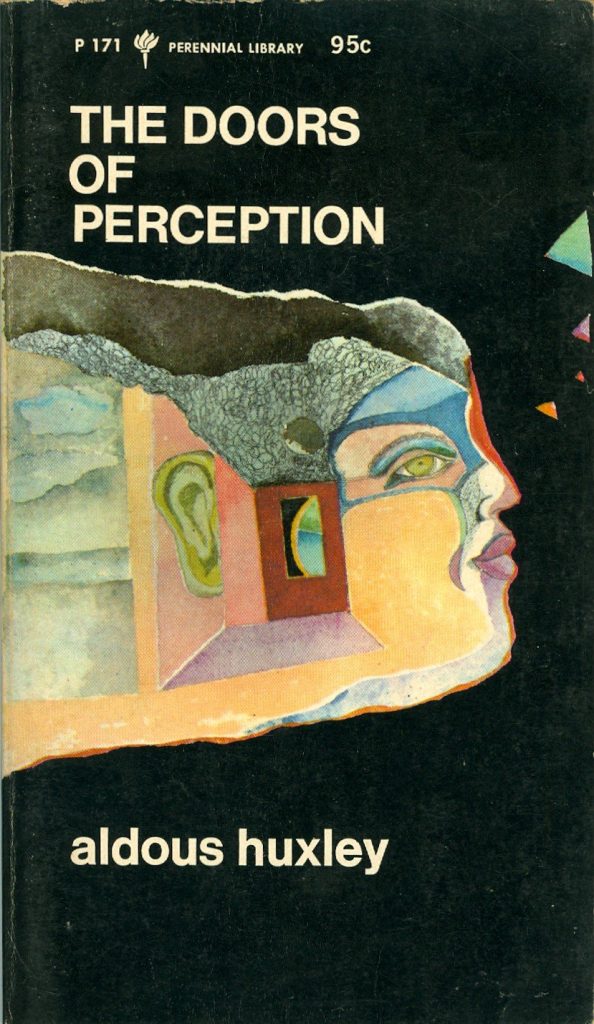 The Doors of Perception—In 1953, more than a decade before most young people first had heard of psychedelic drugs, the prolific British writer and philosopher Aldous Huxley (whose other masterpiece was Brave New World) took some mescaline and decided to write about his tripped-out experience. The Doors of Perception was published the following year and met with both curiosity and skepticism at first. But by the time LSD and related drugs were finding mass acceptance among the next generation, the book had found a new audience, serving as something of a guide to the psychedelic experience. One quartet of Los Angeles musicians were so impressed with it that they called themselves The Doors.
The Doors of Perception—In 1953, more than a decade before most young people first had heard of psychedelic drugs, the prolific British writer and philosopher Aldous Huxley (whose other masterpiece was Brave New World) took some mescaline and decided to write about his tripped-out experience. The Doors of Perception was published the following year and met with both curiosity and skepticism at first. But by the time LSD and related drugs were finding mass acceptance among the next generation, the book had found a new audience, serving as something of a guide to the psychedelic experience. One quartet of Los Angeles musicians were so impressed with it that they called themselves The Doors.
Watch a rare 1958 interview with Huxley
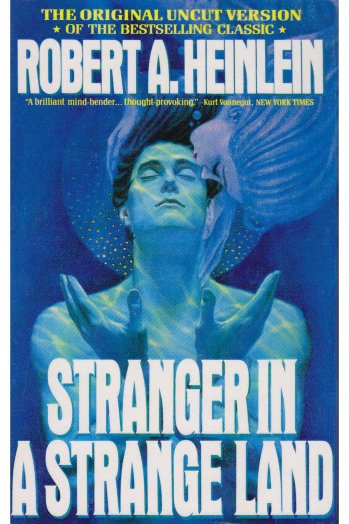 Stranger in a Strange Land—Hippies loved sci-fi, and Robert Heinlein’s 1961 novel is one of the formative books of the genre. The tale of a Martian named Smith who comes to Earth resonated with the young generation of the ’60s because of its not-so-veiled references to free love and communal living, its antiauthoritarian subtext and its overall message of feeling displaced. Ideas from the book, and the book itself, later found its way into numerous rock songs, including a Leon Russell tune sharing the book’s title.
Stranger in a Strange Land—Hippies loved sci-fi, and Robert Heinlein’s 1961 novel is one of the formative books of the genre. The tale of a Martian named Smith who comes to Earth resonated with the young generation of the ’60s because of its not-so-veiled references to free love and communal living, its antiauthoritarian subtext and its overall message of feeling displaced. Ideas from the book, and the book itself, later found its way into numerous rock songs, including a Leon Russell tune sharing the book’s title.
Watch Leon Russell sing his song “Stranger in a Strange Land”
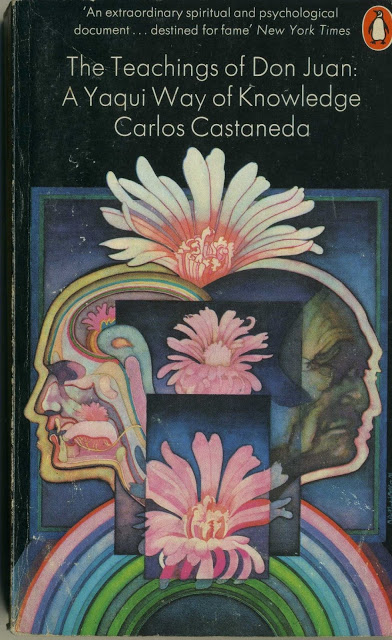 The Teachings of Don Juan—Not to be confused with the character of the Spanish play or the Italian opera, this Don Juan is a Yaqui Indian sorcerer from Mexico, from whom author Carlos Castaneda learned much about life (with a lot of help from peyote and other natural hallucinogens). Upon its publication (and still), there was some debate over whether the work was fictional or true, but regardless, it hit home with many readers upon its 1968 publication and thereafter.
The Teachings of Don Juan—Not to be confused with the character of the Spanish play or the Italian opera, this Don Juan is a Yaqui Indian sorcerer from Mexico, from whom author Carlos Castaneda learned much about life (with a lot of help from peyote and other natural hallucinogens). Upon its publication (and still), there was some debate over whether the work was fictional or true, but regardless, it hit home with many readers upon its 1968 publication and thereafter.
Listen to an audio interview with Castaneda from 1969
You can purchase many of these books in the U.S. here and in the U.K. here.
Related: Part two, with 17 more books that hippies loved
Watch Jack Kerouac read from On the Road on The Steve Allen Show
- Over Under Sideways Down: Making Sense of the Yardbirds’ Album Releases - 05/27/2024
- 17 Classic Chuck Berry Covers - 05/18/2024
- ‘Brandy’ by Looking Glass (It’s a Fine Song) - 05/18/2024

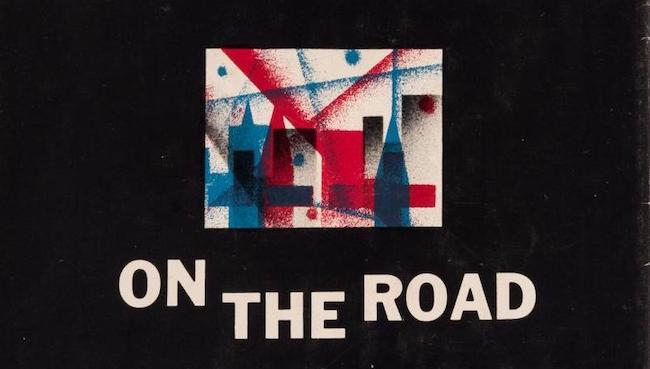
15 Comments
Whaaaat? No Herman Hesse? No Steppenwolf or Siddhartha? No Kurt Vonnegut? No Slaughterhouse 5 or Cat’s Cradle?
Did you see the part about where we said this is part one of two?
I can’t believe you didn’t include Siddhartha by Herman Hesse!
I can’t believe you didn’t see that this is part one of two.
I can’t believe he didn’t include books I think he should have included. Same comment will apply to part 2.
As soon as I write it!
Great list – read 10 and still own a few. But notice all male authors! Female hippies may have been reading these and more. How about the classic Our Bodies, Ourselves? Novels – include The Golden Notebook by Doris Lessing, The Bell Jar by Sylvia Plath
Please note that there is a second part on the way. Thanks for your comments.
I hope Part 2 can contain Paul Williams’ “Das Energi.” Wonderful book.
Wow! It’s apparent that after reading all these books mentioned that we really didn’t “grok” much as a species, did we?
I must have been circling another planet then, as my reading was square in comparison ..
Will be curious if The Underground Guide To Colleges will be on #2. It was my prime future choice bible for all the awesomely wrong reasons.
Part two has already been published. There is a link at the top of part one. That book did not make the cut, sorry.
“Ringolevio” by Emmett Grogan. Probably contains a high percentage of bullsh*t, but a good telling of the Counterculture.
Thank you, Jeff, this was excellent. So many great segments… the 1958 Huxley interview was incredible – he foresaw everything happening in politics today. And Pirsig gave an insightful look into his writing process.